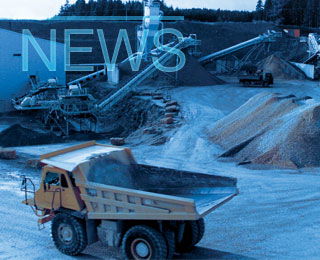Domestic cement sales in Brazil saw a 6.3 per cent decline to 4.467Mt in December 2022 when compared with December 2021 when sales reached 4.766Mt, according to the country’s cement association, SNIC.
SNIC attributes the drop to higher inflation rates, leading the central bank to increase the Selic rate to 13.75 per cent, making real estate financing more expensive and encouraging migration to investments in financial products. As a result, the real estate sector showed a significant drop in launches, which were down 8.5 per cent YoY. In addition, the Casa Verde Amarela housing policy delivered a disappointing performance and wages of the population are lower than before the COVID-19 pandemic, leading to lower disposable incomes. Above-average rainfall and the World Cup also negatively affected cement sales, according to SNIC.
The southeast, the largest market in Brazil, reported an 8.8 per cent YoY fall to 1.919Mt in December 2022 from 2.105Mt, while the northeast saw a 2.8 per cent decrease to 1.011Mt from 1.04Mt over the same period. However, the largest drop was noted in southern Brazil, where the market contracted by 10.4 per cent to 0.781Mt in December 2022 from 0.872Mt in the previous year’s equivalent period. The central-west saw sales slip by 2.1 per cent YoY to 0.518Mt in December 2022 from 0.529Mt. The small northern market reported an 8.2 per cent upturn to 0.238Mt in December 2022 from 0.22Mt.
Exports shrank by 8.8 per cent to 31,000t in December 2022 from 34,000t in December 2021.
Full-year 2022
Brazil’s cement market contracted by 2.7 per cent YoY to 62.649Mt in 2022 from 64.395Mt in 2021. The north and central-west saw a 1.6 per cent YoY pick-up to 2.879Mt and 7.597Mt, respectively – the only markets to return growth. Sales in the south declined by two per cent to 10.87Mt in 2022 when compared with 2021, while in the southeast they were down 3.6 per cent YoY to 28.804Mt. The northeast reported the largest market contraction, at 4.6 per cent, to 12.499Mt in 2022.
Meanwhile, export sales fell by 13.7 per cent YoY to 0.403Mt from 0.467Mt in 2021.
Outlook
For 2023 the outlook shows great uncertainty. The Russia-Ukraine war and economic issues in the USA, Europe and China are leading to high input prices, global inflation and increases in interest rates – all expected to lead to a contraction in the global economy.
In Brazil, high interest rates and indebtness of families, the slow recovery of wages – if any, and the government’s fiscal situation add to the uncertainty caused by external factors. However, the new Lula administration has shown an appetite for directing investment into the housing sector and infrastructure and civil construction is expected to be a positive factor.
Therefore, SNIC projects a market growth of one per cent in 2023, resulting in a market volume close to 64Mt.

Vietnam sees higher February dispatches
Cement dispatches in Vietnam increased by 62 per cent YoY to 4,099,468t in February 2025, accord...